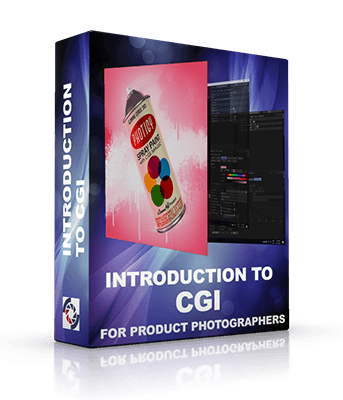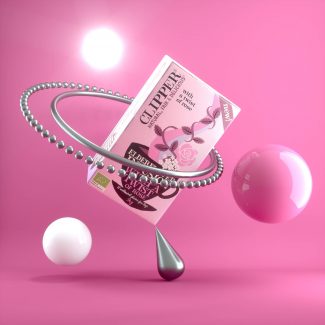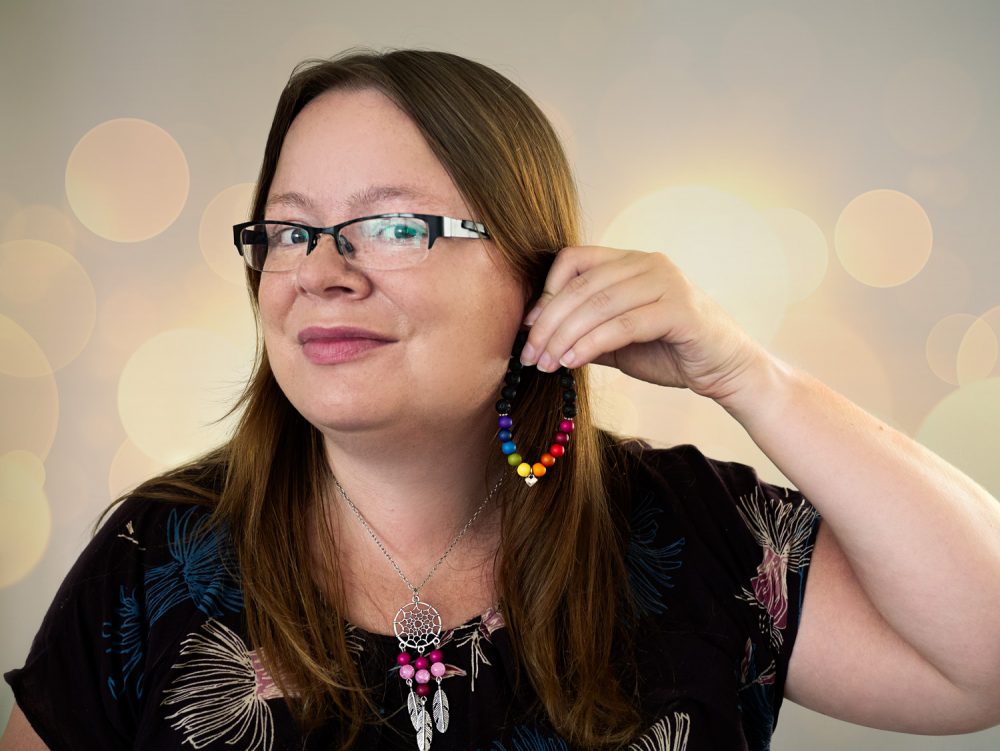Get Inspired - An interview with Janine Pauke, CGI Artist & Photigy Instructor
In Part I of this featured interview, we sit down with Janine Pauke, a CGI artist and product photographer based in Best, Netherlands, to talk about her long and fascinating career in the industry, from her early days with Maxon to the launch of her new production studio, Liandi, in 2019.
Her delightful work and her passion for blending studio photography with CGI led us to engage her as a Photigy instructor. Her first course, Intro to CGI for Product Photographers, is coming soon! In the meantime, we are pleased to introduce you to this wonderful artist and her work.
Thanks for taking time to do this interview; we know you’re a little busy at the moment with multiple projects, including the brand-new CGI course for Photigy, so let’s just jump right in. You launched your own studio, Liandi, last year (September 2019), but you have been involved with CGI for quite a while. Can you give us a brief history of your work experience in the industry and how you got started?
It all started when I was 12; my mom brought home a 3D software package called Dali for my Amiga computer. It was very basic, but I loved reading about raytracing in the manual. A couple of years later I was using Cinema 4D version 1.5, which was a lot more user friendly. That experience eventually led me to take a job as an in-house CGI artist at Maxon Computer Germany in 1999—Maxon as you know is the publisher of C4D. I also provided tech support.
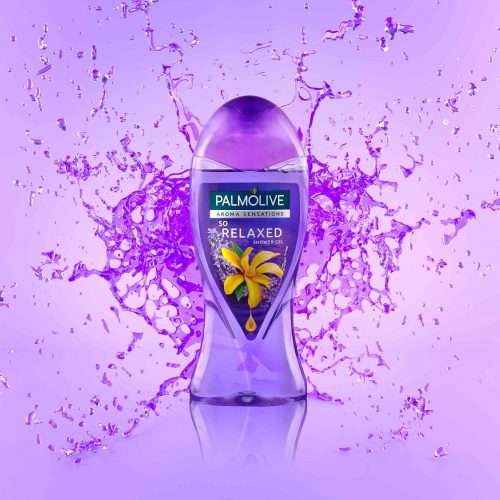 A couple years later, I moved to the UK and continued working as an in-house CGI artist at Maxon Computer UK. From there, I went to work as a digital matte painter at the Moving Picture Company in London, making digital movie environments and backgrounds with Photoshop, Maya and RenderMan. [Editor’s note: readers not familiar with the history of CGI in the movie industry may enjoy knowing that Pixar’s RenderMan was used to create the first feature-length computer-animated film, Toy Story in 1995].
A couple years later, I moved to the UK and continued working as an in-house CGI artist at Maxon Computer UK. From there, I went to work as a digital matte painter at the Moving Picture Company in London, making digital movie environments and backgrounds with Photoshop, Maya and RenderMan. [Editor’s note: readers not familiar with the history of CGI in the movie industry may enjoy knowing that Pixar’s RenderMan was used to create the first feature-length computer-animated film, Toy Story in 1995].
That’s an impressive start to your career. What were the movies you had an opportunity to work on?
I worked on visual effects for both Aliens vs. Predator and Stage Beauty, both released in 2004. [Editor’s note: readers can see some of Janine’s matte paintings here: http://liandifoto.nl/files/avp1.jpg and here: http://liandifoto.nl/files/avp2.jpg]
What came next?
For the next decade, I worked as a freelance CGI artist in England and later the Netherlands, doing work for companies including Design Bridge, Landor and McCann, which was McCann Erickson back then. The work often involved making realistic renders and animations of products at various stages of the design process. Brands included Rémy Martin, Heineken, Ballantine’s, Macallan, Fosters, Marlboro and Walls.
During that time, I also co-founded 3D Fluff, making and selling video tutorials for Cinema 4D. I took a break for a while to be a full-time mother and then went back to working as a CGI artist at Label4VISUALS in the Netherlands in 2017. I worked as a 3D animator and VR/AR content creator, working with Cinema 4D, Octane and Unity.
With such varied experience, did you ever take classes, were you mentored by anyone, or did you teach yourself when you first started out?
I’m completely self-taught. There was no YouTube back then, no video tutorials and the Internet was too slow anyway. I did have some online contact with other 3D artists, but they were about as experienced as I was. A few written tutorials were all I came across. My first task as a Maxon employee in 1999 was actually translating those written tutorials and making a database of tips and tricks for Cinema 4D when I was 17. That’s when I really started learning a lot more.
That’s amazing. The mental image of you creating a Tips & Tricks database at just 17 is great. What were some of your first projects?
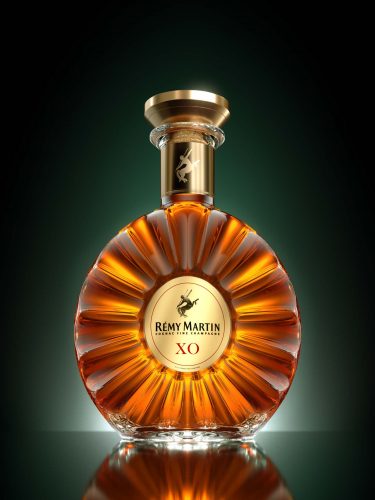 My first commercial project as a freelancer was making realistic renders of a bottle of Rémy Martin cognac. I made a few different renders with variations in the bottle design and label artwork (they provided me with the CAD models and artwork). They must have liked the results because that was what jump-started my freelance career and I made many more bottle renders for them over the years after that.
My first commercial project as a freelancer was making realistic renders of a bottle of Rémy Martin cognac. I made a few different renders with variations in the bottle design and label artwork (they provided me with the CAD models and artwork). They must have liked the results because that was what jump-started my freelance career and I made many more bottle renders for them over the years after that.
Gradually I also branched out into animations and other subjects but when I look back, it’s those bottle renders that I was especially good at. That was the inspiration for me to make a modern-day version of a similar Rémy Martin bottle for my current portfolio. I’d love to do more of that kind of work.
Did you have a particular niche that appealed to you right away?
Photorealism! And lighting. But those two things go hand-in-hand. I found myself making a lot of realistic still-life images, analyzing the lighting in photos and applying that to my 3D scenes. I realize now that a lot of my inspiration came from product photography.
Who were some of your clients?
Design Bridge is one company I did a lot of work for in London. I made realistic images and animations of bottles and other products by big brands there. Landor was another one, a branding agency. I did a lot of work for Marlboro there, visualizing interior spaces where smokers could slowly kill themselves without harming others—at least that was my take on it. I also worked as a Cinema 4D trainer; McCann Erickson was one of the companies where I taught.
Let’s talk about the process a bit. In general terms, what segments make up a CGI/3D workflow? What tools are needed for each segment of the pipeline? What tools do you use?
I use Cinema 4D for almost everything, including the modeling, materials, lighting, animation and most special effects. Most of my projects are rendered with Octane (a 3rd-party GPU-based render engine), which is seamlessly integrated with Cinema 4D. You can use C4D’s own render engine as well of course, especially if you don’t have a fast video card. C4D runs on pretty much any reasonably modern PC or Mac, and product visualization projects aren’t as complex as say big architectural projects, so no need for expensive hardware.
I use Photoshop for creating textures and for post-production, and Adobe Premiere for videos. A lot of people use After Effects for post-production of animations, but I only have some basic knowledge of that program, so I stick with Premiere.
Big production houses tend to have specialized people for all these individual tasks, but as a freelancer or small business you’re more likely to do almost all of it yourself. I’m a generalist myself as well, but I do have a focus on lighting and rendering, and less on modeling, for example. I can model complex objects but I’m not very quick or patient. I often buy my models on TurboSquid for personal projects (plenty of free ones there too) and tweak them if I need to, and for many commercial projects I’ve had models provided for me.
Companies that design jewelry or other products often already have 3D models they’re happy to provide you with to work on projects for them. They can usually provide you with all the label artwork as well to use as textures. I did some work for a small company in the past who outsourced all their modeling to people in Russia who specialize in it, which is another option. It doesn’t matter what 3D software they use for modeling, as far as I know any modern 3D software can export/import .fbx files or older formats like .obj or .3ds.
Take us through one of your recent (or favorite) CGI projects. What was it, what inspired it, and as an artist, how did you conceptualize it and create it?
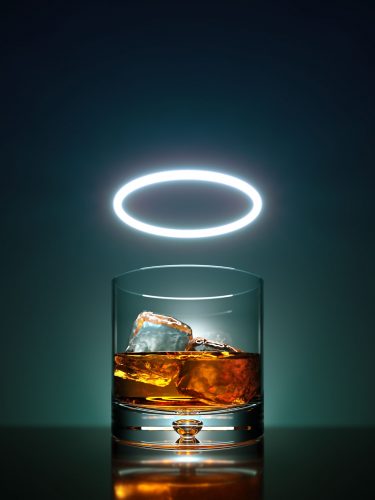 I already mentioned that bottle of Rémy Martin XO which is one of my favorites, but before I had the model of the bottle I wanted to do a little test with a whiskey glass. Just something simple.
I already mentioned that bottle of Rémy Martin XO which is one of my favorites, but before I had the model of the bottle I wanted to do a little test with a whiskey glass. Just something simple.
I remembered seeing a glass with a quirky bubble at the bottom somewhere at Photigy. I eventually found it in Alex Koloskov’s portfolio. So, I started by modeling the glass by drawing a spline path and “lathing” it (a very simple procedure), creating a floor and a background plane and then I kind of reverse-engineered the lighting setup of the original photo.
I figured there must have been a spotlight with a gel from below to illuminate the background and a spot from above the glass. At the same time, I was tweaking the material properties of the glass, liquid and ice cubes to make it all look as good as the photo. I think I got quite close to the original, minus the smoke, plus halo.
I called it “Innocent Drink” and was pretty pleased with how it turned out, considering I only spent a day on it with about an hour of post-production in Photoshop afterwards. This is the kind of project I love most: quick, fun and pretty.
Normally, it’s not a good idea to get that close to someone else’s work; I don’t know where people draw the line, but it’s best to make sure your source of inspiration doesn’t mind you putting it in your own portfolio.
That project was definitely in line with traditional “tabletop” product photography. What was the biggest or most complex project you have worked on?
I did a huge 3D animation project for a cruise ship company about 10 years ago. They needed digital, animated backgrounds for the musicals onboard their cruise ships since that meant they didn’t have to build complex sets. It paid very well but the project dragged on forever; I kept having to wait for feedback and ended up with too many changes too close to the deadline.
Because of that, I wasn’t happy with the results and couldn’t use any of it for my portfolio. I realized then that I prefer shorter projects that take a couple of weeks at most. I tend to work very quickly and intensely when I’m creative, but that creativity needs regular breaks.
How has your career evolved over time?
I kind of stumbled into things in the past. I was very young, naive and oblivious to the fact that I was working for pretty big names in London, that I was especially good at product visualization and that I should have stuck with that. Instead, I literally went all over the place with my career and kind of abandoned it all when I left England and started a new life in the Netherlands.
I’m originally from Germany by the way; Maxon is a German company. The Netherlands are right in between England and Germany so that was one of the reasons. After my move, I kept on working for my English clients, but I didn’t make an effort to keep that up. At the same time, I didn’t have much luck with networking in the new country. I’m very introverted.
What was it like working in London and then moving to the Netherlands?
London was great for me as a CGI artist, tons of companies and work, while there were mostly tumbleweeds in the Netherlands. And I didn’t know it, but I was descending into depression and developed an online gaming addiction on top of that. That completely killed my creativity. It took me several years to get back out of that dark place.
I try to stay away from gaming now. My boyfriend is a gamer as well, so that doesn’t help…I recently reinstalled my computer but haven’t added any games yet. I think I’ll keep it that way. Maybe forever. But that’s what I said last time too, so we’ll see how long that lasts.
Back when you did play, did you notice things about video games based on your CGI experience that an average gamer wouldn’t?
Games have certainly inspired me. I think HalfLife 2 was one of the first games to make use of HDR (high dynamic range) technology for illuminating the game world. I wasn’t very good at playing it (I prefer games like World of Warcraft and Diablo), but I could stare at the beautiful environments for ages! I also really love post-apocalyptic environments. And places like Chernobyl that were abandoned by humans and where nature is taking it all back. I just really have an appreciation for interesting places and light (especially sunlight!) in games or in the real world. I love exploring.
That’s one of the magical aspects of gaming; getting lost in amazing new worlds. So, what interests or hobbies replaced gaming for you, outside of working in CGI?
Way too many…I’m very creative in general; I like drawing and meditation and the combination of the two. I also practice Miksang Contemplative Photography, which is the complete opposite of commercial photography. I need that to balance things out.
With those earlier, darker times now in the rear-view mirror so to speak, what is your approach with work?
Now I’ve got my own business again and this time I actually know what I’m doing. I’m still at the beginning of this new adventure, but I’m much better prepared now and I know a good opportunity when I see it. This time I’m not going in blind. I know what I’m good at and I’m sticking to my niche: high-end images and animations of products.
And teaching.
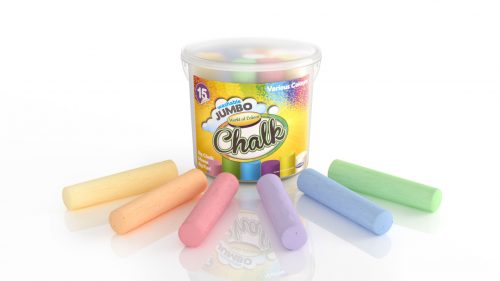 Yes, that’s always been a big part of my career as well and I still enjoy it. Nothing beats helping others to become more skilled and successful! In the past that has led to me neglecting my own portfolio, so this time I make sure I work regularly on personal projects. That way I also get to learn things. There’s always new stuff to learn and pass on!
Yes, that’s always been a big part of my career as well and I still enjoy it. Nothing beats helping others to become more skilled and successful! In the past that has led to me neglecting my own portfolio, so this time I make sure I work regularly on personal projects. That way I also get to learn things. There’s always new stuff to learn and pass on!
Be sure to read Part II of our featured interview with Janine, where we talk about her pursuit of product photography, the convergence of photography and CGI, and her brand new CGI course for Photigy.
Janine Pauke
Check out more of her creative work:
Portfolio website: https://liandifoto.nl
and follow her on Instagram:
Upcoming Course:
